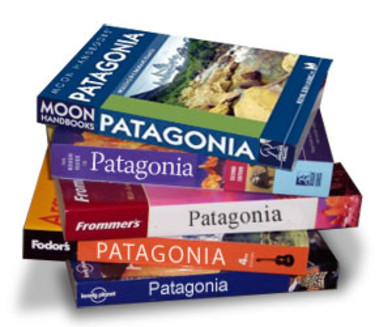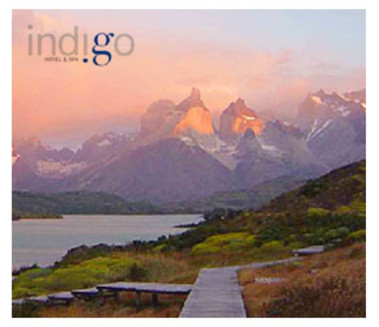Tourists re-define brand Patagonia
November 19, 2007 - brandchannel.com


Tourists re-define brand PatagoniaThe Patagonian brand—one of desolate desert steppe, jagged peaks, and mammoth glaciers that look like crushed cities—is both growing and undergoing a shift. Though many people first learned of Patagonia from the outdoor clothing line, more and more tourists are becoming interested in Patagonia the region, and it now finds itself caught between catering to the expectations of tourists and maintaining its authentic rugged identity and lifestyle.
In Puerto Natales, one of the region’s busiest cities, two leaders of the tourism industry are curiously uninterested in giving their clients a taste of the local culture. Hotelier Hernan Joffré and restaurateur Max Salas are Santiago transplants who don’t think their customers travel great distances for the indigenous culture, either.
“A traveler comes [to the hotel] for two or three days and they go away,†says Joffré, the unintentional mastermind behind Indigo Hotel & Spa. “They are more interested in the beauty of nature. People don’t come to see Puerto Natales. We have a casino here,” he says, referring to a dive that’s a favorite hangout for locals. “Do you believe tourists want that? If you want a casino, go to Las Vegas.”
And he feels his colleagues clearly haven’t caught on to the concept of customer service, which is important if the local economy wants to attract tourists.
Though tourists can get a good night’s sleep in most typical Patagonian lodgings, and some can be pretty good, most of them haven’t had an aesthetic update in 20–30 years. This may and may not be part of their charm.
Joffré, who tends to wear hip, rugged clothes and a rather smart ball cap, learned as he went, one step at a time. “I studied commercial engineering (a mix of business, marketing and engineering), but after that was finished, I came to climb.â€
“It was like a ghost town here,” he says, gesturing toward the mountains across the sound. “We rented [the house] and made a pizzeria/pub downstairs with rooms upstairs. It was the one hip place for climbers,” he says.
The business started growing and from the makeshift hotel, they began offering guided trips into the park. In 1999, he bought the building.
Just over a year ago, the hotel underwent a major remodeling masterminded by noted Chilean architect (and Santiago native) Sebastián Irarrazaval. Compared to what is typical here, Indigo nattily bucks the doily and tea cozy trend. The way Joffré looks at it, who’s going to say no to a beautiful room, a firm bed, and three rooftop Jacuzzis after a week of intense hiking?
Intentional or not, it was a clear plan. He wooed investors while building a base of scruffy young climbers that became well-booted clients; though still adventurous, they were increasingly fond of creature comforts. He also split the hospitality and trekking into separate ventures, giving visitors all the Patagonia they could take with his Antares Patagonia tour company and tucking them in stylishly at the beginning and end of their trek at a hotel initially called Concepto Indigo.
“The people coming through town began to change,” he says. “They didn’t have any trouble sleeping in a tent [while they where hiking and climbing], but they loved coming back into town and spending money for a good room and a good meal.”
The potential to grow was easy to see for Joffré, but convincing Chilean investors wasn’t as simple. For the investment money necessary for last year’s mammoth remodeling, he had to go abroad. The locals didn’t see what the foreigners had in mind.
“I started looking for investors in Santiago, but they thought tourism was a weird idea and Patagonia too far away,” he says. Instead, he found a Spanish/French couple (Spain has historical ties here, and French singer Florent Pagny went on a Patagonian kick a few years back and the region has since become a trendy destination for the Parisian jet set) who ponied up the cash.
Listening to him, it’s easy to understand why he chose to veer away from the typical Patagonian hotel experience and why he’s taking advantage of his perspective as an outsider.
“A local guy told me I had to have a karaoke pizza bar. I said ‘No.’ My target was not locals.” Instead, he put himself in the traveler’s boots and concentrated on the little details. “I don’t drink coffee, but I know people do. I don’t like oily food and there’s no smoking here,” he says, adding, “In a hostel, it used to be that they would serve you food and be smoking to you at the same time.”
The bar and restaurant attached to Indigo (but under separate ownership) serves fresh, local fish and mean espresso (rare in the area), but the management has a similar take on tourism at the bottom of South America.
“Tourism is still part of an alternative lifestyle,” says Max Salas, who runs both the Pez Glaciar Sea & Food restaurant and the Pisco Sour bar. Like Indigo, the bar and restaurant have a sleek, modern design that, for better or for worse, could be found just about anywhere.
Among other dishes, Salas’ team serves up five different ceviche preparations along with sesame seed-encrusted conger eel (he uses the more marketing-savvy name “kingclipâ€), and several presentations of the strong-flavored silverside.
Yet, is this experience authentic? Is this what people want when they come to Patagonia? If tourists want the complete Patagonian experience, one where the locals feed them meals and they sleep in one of the bedrooms rented to travelers, Indigo and Pez Glaciar probably aren’t for them.
“Is it authentic?” asks Joffré, “I’ve been asking myself that for 11 years. I don’t know how many travelers are looking for that, as opposed to something comfortable.”
It’s an outsider’s vision of tourism in Patagonia and for better and for worse some might say it’s the wave of the future—and Patagonia’s brand of the future, too.
Joe Ray is a Paris-based freelance journalist specializing in food and wine. He can be contacted via his Web site: www.joe-ray.com.